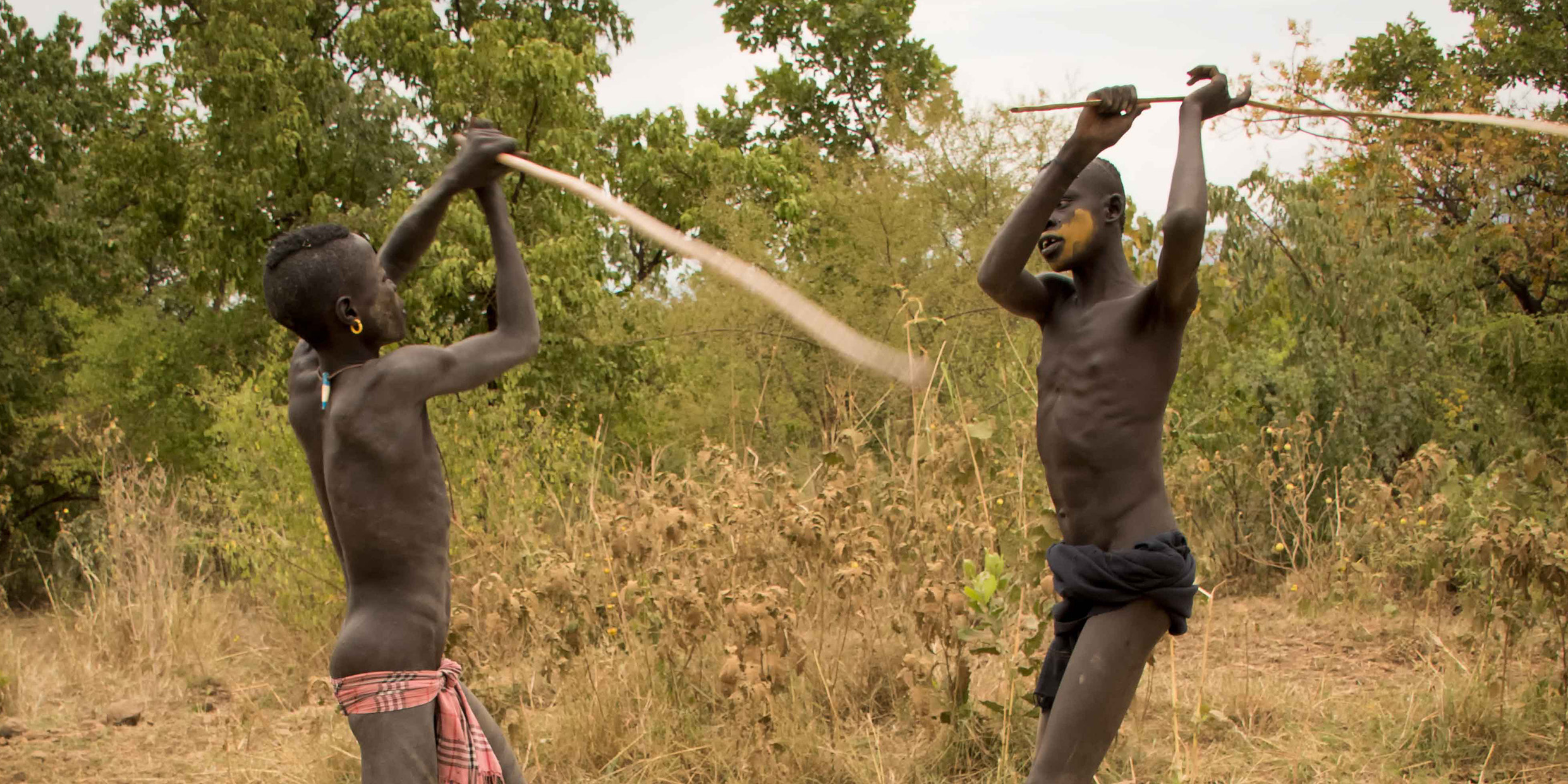Originally published 21 August 2005
Two weeks ago [in 2005], The Sunday Times Magazine published a photo essay by the distinguished photographer Don McCullin on the tribes of the Omo valley in southern Ethiopia.
His subjects are mostly naked, their bodies decorated in startling ways with mud, tattoos, skin-distorting lip and ear lobe disks, mutilations. A physically beautiful people — the young women with their beads and bangles would not look out of place on a fashion catwalk.
The men of the tribes gather annually for the traditional donga fight, a sometimes lethal ritual intended to impress women. They have at each other with long sticks, the tips of which are carved into phallic shapes. By western standards you’d think you had slipped into a time warp, taking you back thousands of years into the past.
Well, not quite. Along with the phallic sticks the men now sport Kalashnikovs and AK-47s, seemingly their only concession to modernity. Warfare has always been constant among the tribes; it has now taken on a rather deadlier aspect.
For the men of the Omo valley, lethal weapons are the defining symbols of manhood.
From Gaza to the US civilian militias, from Baghdad to Sudan, we are saturated with images of males with guns, sometimes boys as young as eight with automatic weapons slung over their shoulders. We seldom see a news photograph of an armed female. Aggression is a boy’s game. Guns are a boy’s toys.
Is it genes or culture? Are human males violent for the same reason birds migrate and crickets sing, or is it something we learn from our fathers and peers? The question has been debated for more than a century by anthropologists, ethologists, biologists, and social psychologists without resolution. The debate has been loaded with personal prejudices, social agendas, intellectual fads and fashions. Few scientific controversies have evoked such passions.
The debate has gone through several rounds since 1963, when Konrad Lorenz published On Aggression. Lorenz, sometimes called the father of ethology, the study of animal behavior, proposed that humans share with other animal species an inborn killer instinct, which we lack the capacity to control.
Other scientists vehemently disagreed. They drew attention to a few apparently non-aggressive human societies that have survived in remote corners of the globe, and to our primate cousins, the great apes in particular, which seemed at that time to live without aggression toward their own kind.
Subsequent field studies by Jane Goodall, Dian Fossey, and others showed that apes are not as peaceable as they once seemed. And one need only turn on the television anywhere in the world to be convinced that human males have a remarkably universal propensity for violence.
The gene-nurture controversy was reenergized in 1975 with the publication of Harvard biologist E. O. Wilson’s Sociobiology: The New Synthesis. Yes, we are innately aggressive, insisted Wilson, and a wail of protest went up from critics. Some critics questioned the scientific legitimacy of Wilson’s deductions. Others worried that even the supposition of an “aggression gene” might dangerously lessen our sense of personal moral responsibility.
In recent decades, research with male mice and male humans has again stirred up debate with evidence that chemicals coded by the genes may control aggression centers in the brain.
Genes or culture? A non-specialist enters this maelstrom of contention at his peril. However, having read my way through 40 years of the debate, I would guess that both contending positions possess an element of truth.
Yes, a tendency towards aggression is probably part of our male genetic makeup, but so too might be strategies of reconciliation. Yes, machismo culture almost certainly reinforces the violent instinct in boys and men. And, most importantly, whatever our genetic legacy, most of us are fully capable of taking responsibility for our own behaviors.
Understanding the biological roots of aggression will not change our social obligation to live in harmony with our burgeoning species on a small planet. Nor does it mean that society does not have the right to insist upon standards of non-aggressive behavior.
In McCullin’s photographs we see the progressive initiation of young boys into a culture of violence. We see it also in the madrassa schools of radical Islam, and in video gaming and Hollywood films. There are differences, of course, between the NRA agenda and the male rituals of the Omo valley, but there is much in common too.
McCullin thought the Omo tribes to be an joyless people. In only one of his Times photographs is there even a hint of a smile — on the face of a young woman. More often his subjects look at the camera with weary sullenness, as if they are trapped in a cycle of violence from which there is no escape.
I once heard the anthropologist Margaret Mead define civilization as the ever expanding circle of those whom we do not kill. We have fragile cause for hope in the growing number of people for whom the circle of nonviolence now includes the entire globe.



